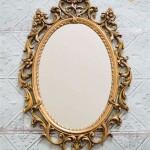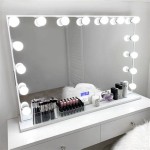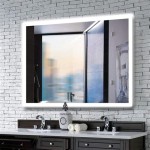Convex Mirrors Can Produce Both Upright and Inverted Images
The common understanding of convex mirrors is that they always produce upright, virtual, and diminished images. While this is generally true for objects placed in front of the mirror, a lesser-known fact is that convex mirrors can also produce inverted, real, and diminished images under specific circumstances. This involves placing the object not in front of the reflecting surface, but rather on the "virtual" side of the mirror, achieved through the projection of converging light rays.
To fully grasp this concept, it's crucial to revisit the fundamental principles of image formation in convex mirrors. A convex mirror has a reflecting surface that bulges outwards. When parallel rays of light strike this surface, they diverge, appearing to originate from a point behind the mirror known as the focal point. This focal point is considered virtual as the light rays do not actually pass through it. The distance from the mirror's surface to the focal point is the focal length, denoted as 'f,' and is considered negative for convex mirrors.
The image formation process relies on tracing the path of specific light rays. Two commonly used rays are: a ray parallel to the principal axis, which reflects as if originating from the focal point, and a ray directed towards the center of curvature, which reflects back along the same path. The image is formed where these reflected rays, or their extensions, intersect.
In the standard scenario, when an object is placed in front of the convex mirror, the reflected rays diverge. The image is formed where the extensions of these diverging rays intersect behind the mirror. Consequently, the image formed is virtual (meaning it cannot be projected onto a screen), upright, and always diminished in size compared to the object.
The less conventional scenario occurs when converging rays are incident on the convex mirror. Imagine a scenario where a converging lens is placed before the convex mirror, and the object is positioned such that the lens focuses the light rays towards a point behind the mirror. These converging rays then strike the convex mirror. Depending on the distance of this converging point from the mirror's surface, the mirror can either further converge or diverge these rays.
If the converging point lies between the focal point and the mirror's surface, the mirror will still diverge the rays, albeit less than if they were initially parallel. The resultant image will still be virtual, upright, and diminished, though larger than if the object were directly in front of the mirror without the converging lens.
The most intriguing case arises when the converging point lies beyond the focal point. In this situation, the convex mirror can actually converge the reflected rays further. If the converging rays are focused precisely at the focal point of the mirror, the reflected rays will emerge parallel, effectively forming an image at infinity. If the converging point lies beyond the focal point, the reflected rays will converge, forming a real, inverted, and diminished image in front of the mirror. This real image can be projected onto a screen, unlike the virtual images typically associated with convex mirrors.
Understanding the distinction between real and virtual images is paramount. A real image is formed by the actual intersection of light rays, while a virtual image is formed by the intersection of the extensions of those rays. Real images can be projected onto a screen, while virtual images cannot.
It's important to note that creating an inverted real image with a convex mirror requires specific conditions involving converging incident light, unlike concave mirrors, which readily produce real inverted images for objects placed beyond their focal point. The curvature of the convex mirror, preventing the direct convergence of parallel rays, necessitates the use of an external converging element to achieve this outcome.
The ability of a convex mirror to produce both upright and inverted images underscores the importance of considering the incident light characteristics. While typically observed as producing upright virtual images, the behavior of reflected light from a convex surface can be significantly altered by manipulating the incident light with converging elements, leading to the formation of real inverted images under specific conditions.
This deeper understanding of convex mirror behavior expands their potential applications. While widely used for their wide field of view in applications like security mirrors and car side mirrors, the ability to produce real inverted images, though less common, opens up possibilities in optical systems design, where precise manipulation of light paths is required.

Question Recalling Whether The Image Produced By A Convex Mirror Can Be Inverted Nagwa
Does The Convex Lens Have An Upright Or Upside Down Image Quora

Can Convex Mirrors Ever Produce Real Images Inverted Magnified Quora
Can Convex Mirrors Ever Produce Real Images Inverted Magnified Quora
Can Convex Mirrors Ever Produce Real Images Inverted Magnified Quora
Can A Convex Mirror Form Magnified Image Quora
Is It Right A Convex Mirror Always Forms An Inverted Image Quora
Can Convex Mirrors Produce Lateral Inversion Quora
What Does It Mean When A Virtual Image Is Formed Behind Convex Mirror Possible Quora
Can Convex Mirrors Ever Produce Real Images Inverted Magnified Quora








